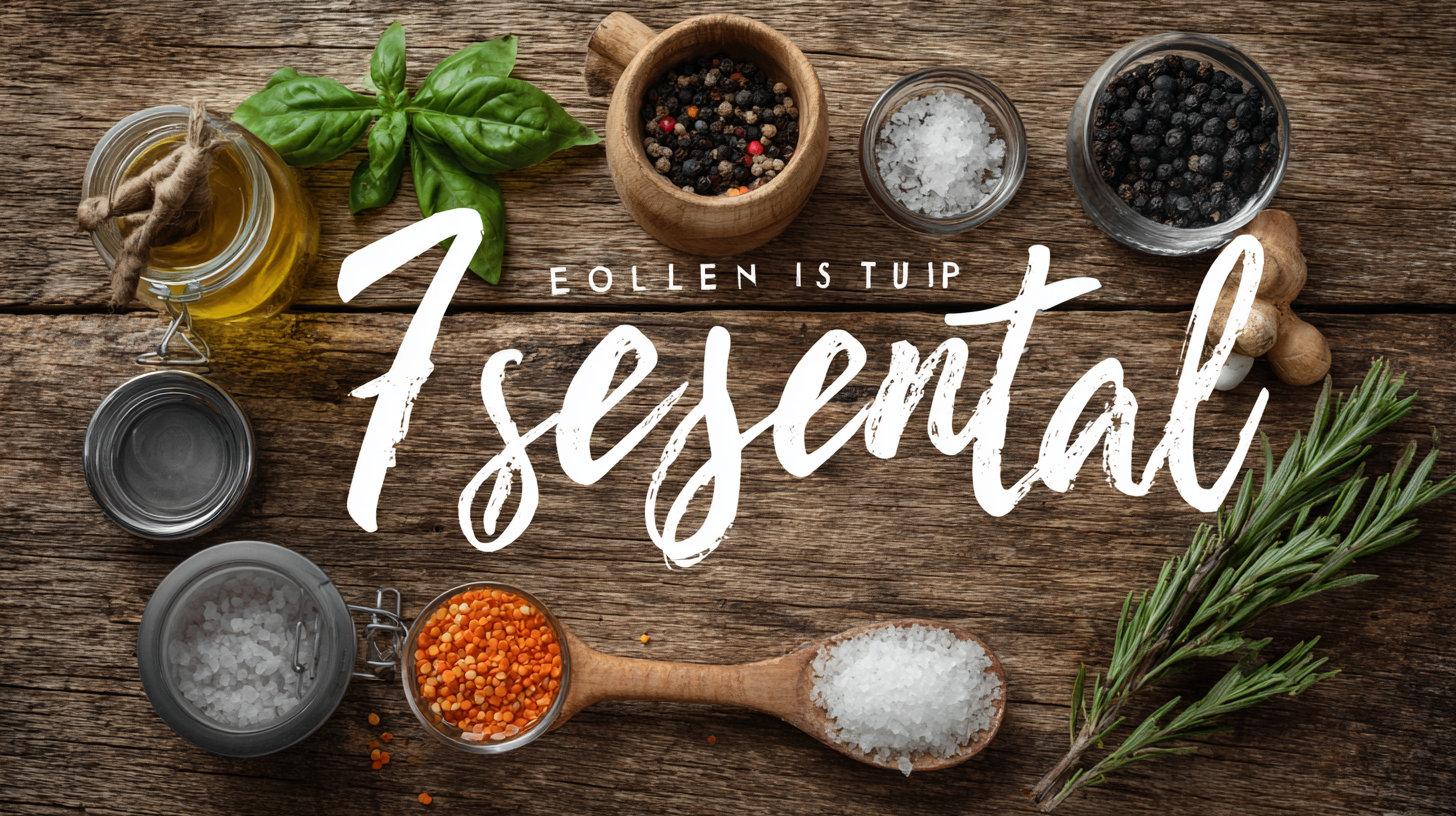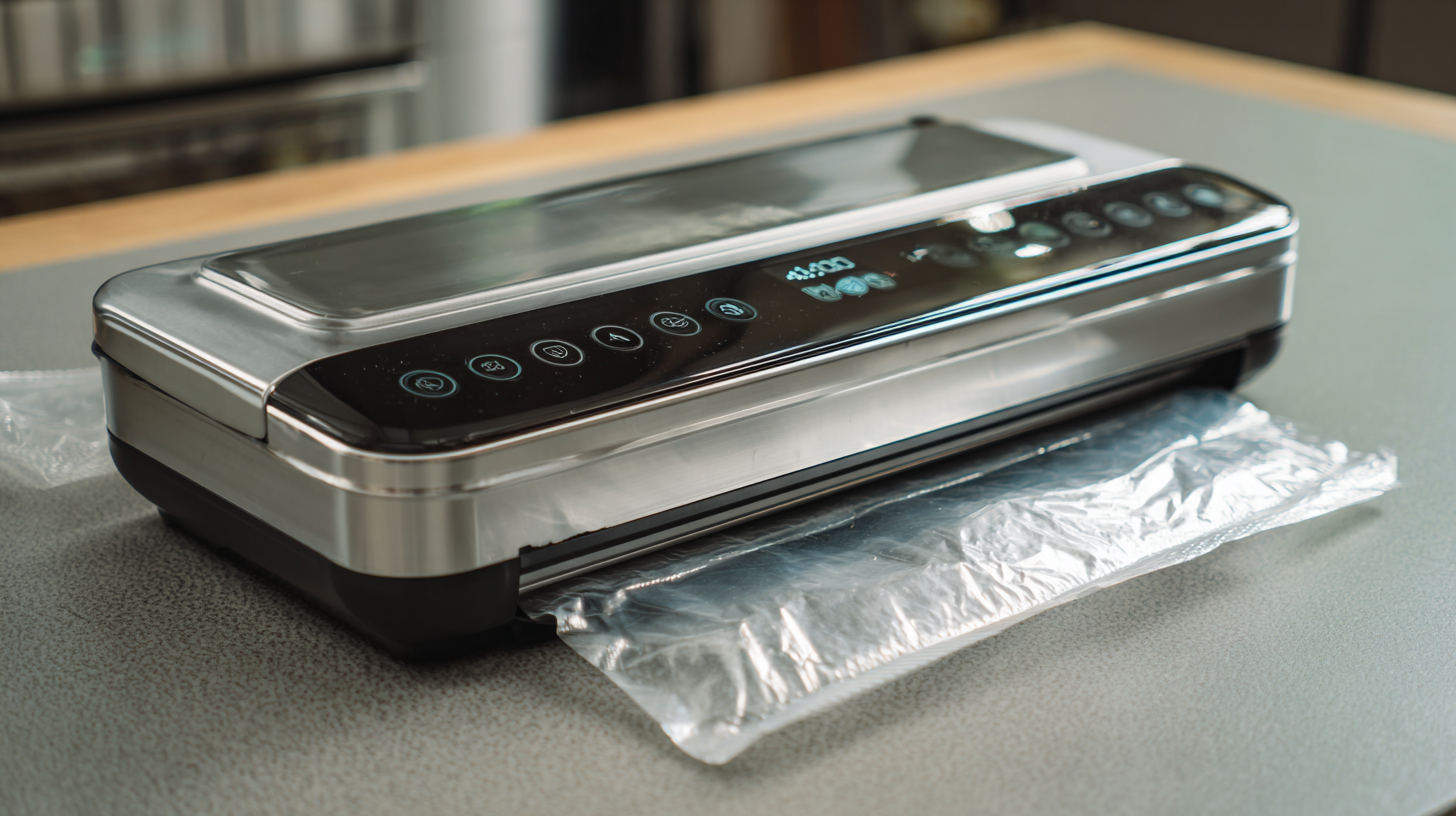About Us | Blog | FAQs | Tips/Troubleshoot | Contact Us | Machine Manuals | Demo Videos
7 Essential Tips for Choosing the Best Vacuum Sealer for Your Kitchen Needs
In an era where food preservation and waste reduction are paramount, selecting the right vacuum sealer has become an essential consideration for home chefs and cooking enthusiasts alike. According to a report by Research and Markets, the global vacuum packaging market is projected to reach $34.35 billion by 2026, highlighting the growing reliance on vacuum sealers for extending food shelf life and maintaining quality. With a myriad of options available, ranging from chamber vacuum sealers to external ones, understanding the nuances of each type is critical for making an informed choice.

This blog will guide you through seven essential tips that will empower you to choose the best vacuum sealer tailored to your kitchen needs, ensuring you make the most of your culinary creations while minimizing food waste.
Table of Contents
[Hide]
Types of Vacuum Sealers: Which One Suits Your Kitchen?
When it comes to vacuum sealers, choosing the right type for your kitchen can make all the difference. There are several types of vacuum sealers available, each suited for different purposes. For instance, countertop vacuum sealers are ideal for home use as they offer powerful suction and can handle a variety of bag sizes. They are perfect for bulk storage and meal prep, allowing you to keep food fresh for longer periods.
Another option is handheld vacuum sealers, which are great for quick tasks and smaller kitchen spaces. These devices can easily seal pre-made bags and are user-friendly, making them a convenient choice for everyday kitchen needs. If you're looking for something more versatile, consider chamber vacuum sealers. Though they tend to be more expensive, they excel at sealing liquids and can handle larger quantities, which is perfect for sous-vide cooking or bulk food preservation.
When selecting a vacuum sealer, focus on your specific needs. Pay attention to factors like sealing performance, ease of use, and maintenance requirements. It’s also wise to check compatibility with different vacuum bags and accessories to ensure you get the most out of your purchase. Keep these tips in mind, and you'll find the perfect vacuum sealer that suits your kitchen perfectly.
Vacuum Sealer Types and Features Comparison
Understanding Different Sealing Methods for Optimal Food Preservation
When it comes to preserving food effectively, understanding different sealing methods is essential in choosing the best vacuum sealer for your kitchen needs. The primary sealing methods include external suction, chamber, and hand-held sealers. External suction sealers are popular for home use, as they are budget-friendly and easy to operate. These machines work by removing air from the bag, sealing it through heat, which makes them ideal for short-term storage.
On the other hand, chamber sealers are a professional choice, designed for bulk packaging and long-term preservation. By sealing the entire bag within a chamber, they provide a strong vacuum and are effective in sealing liquids without any mess. Hand-held sealers offer a portable option, perfect for travel or small spaces, allowing quick sealing of pre-cut bags.
When choosing a vacuum sealer, consider the sealing method that aligns with your food preservation needs. Don’t forget to think about the types and quantities of food you plan to store, as this will help determine the size and capabilities of the sealer you require.
Key Features to Look for in an Ideal Vacuum Sealer
When selecting the best vacuum sealer for your kitchen needs, it's crucial to consider key features that can enhance your food preservation experience. One significant feature to look for is the sealing strength. According to a study by the Food and Drug Administration (FDA), proper vacuum sealing can extend the shelf life of perishable foods by up to 5 times. Look for sealers that provide adjustable pressure settings to cater to different types of food, ensuring optimal sealing for both delicate and robust items.

Another important aspect is the ease of use. A user-friendly interface can make a world of difference, especially for beginners. Data from the International Journal of Food Science shows that consumers prefer vacuum sealers that require minimal setup and offer one-touch operation. This ensures that even those with little culinary experience can preserve their meals efficiently. Additionally, consider the design and portability of the vacuum sealer; compact models are particularly advantageous for kitchens with limited storage space, allowing for easy placement and accessibility.
Lastly, durability and maintenance should not be overlooked. Quality materials often mean longer-lasting devices, which is essential for frequent users. The industry standard suggests that vacuum sealers should be able to withstand heavy-duty use, with brands boasting at least 3-5 years of longevity. Choosing a sealer with detachable parts can also simplify the cleaning process, leading to a more enjoyable cooking experience.
Comparing Manual vs. Automatic Vacuum Sealers
When it comes to choosing a vacuum sealer, one of the key decisions you'll face is whether to go with a manual or an automatic model. Research indicates that automatic vacuum sealers provide greater convenience, reducing the time needed for food preservation by up to 30% compared to their manual counterparts. These devices typically feature built-in sensors that detect the bag’s fullness, allowing for a consistently optimized seal, which is crucial for maintaining freshness.
Tip: Consider your kitchen workflow. If you often find yourself sealing large quantities of food, an automatic vacuum sealer could be a worthwhile investment. For smaller, occasional tasks, a manual sealer might be adequate and save you some kitchen space.
In addition to functionality, you'll also want to consider the overall cost of ownership. According to a 2021 market analysis by Statista, automatic sealers tend to be priced higher, but their efficiency can lead to savings in food waste and preservation costs over time.
Tip: If you choose an automatic model, make sure to look for one with customizable settings for different vacuum levels; this versatility is especially beneficial for delicate items that require a gentler touch.
7 Essential Tips for Choosing the Best Vacuum Sealer for Your Kitchen Needs - Comparing Manual vs. Automatic Vacuum Sealers
| Feature | Manual Vacuum Sealers | Automatic Vacuum Sealers |
|---|---|---|
| Control Type | Manual control | Automatic detection |
| Ease of Use | Requires more user effort | User-friendly, one-button operation |
| Price Range | Typically lower cost | Generally higher cost |
| Sealing Speed | Slower sealing process | Faster sealing capabilities |
| Bag Compatibility | Works with custom bags | Often limited to brand bags |
| Versatility | Best for simple tasks | More options for advanced sealing |
| Maintenance | Lower maintenance needs | May require more upkeep |
Evaluating Price vs. Performance: Finding the Right Balance
When it comes to selecting a vacuum sealer for your kitchen, understanding the delicate balance between price and performance is crucial. High-end models might boast advanced features, like multi-functional capabilities and long warranties, but they may not always deliver on their promises in everyday use. Conversely, budget-friendly options can lack essential features that ensure efficient food preservation. Therefore, it's vital to assess your specific needs and cooking habits to determine what level of performance is necessary for your kitchen.

To evaluate price versus performance effectively, start by identifying your primary uses for the vacuum sealer—whether it's for sous vide cooking, meal prepping, or preserving seasonal produce. This will help you pinpoint models that offer the features most important to you without overspending on unnecessary extras. Read user reviews to get real-life insights into the machine's performance, and consider the long-term savings that proper food preservation can provide. In this way, you can find a vacuum sealer that perfectly balances affordability with the performance needed to enhance your culinary endeavors.

